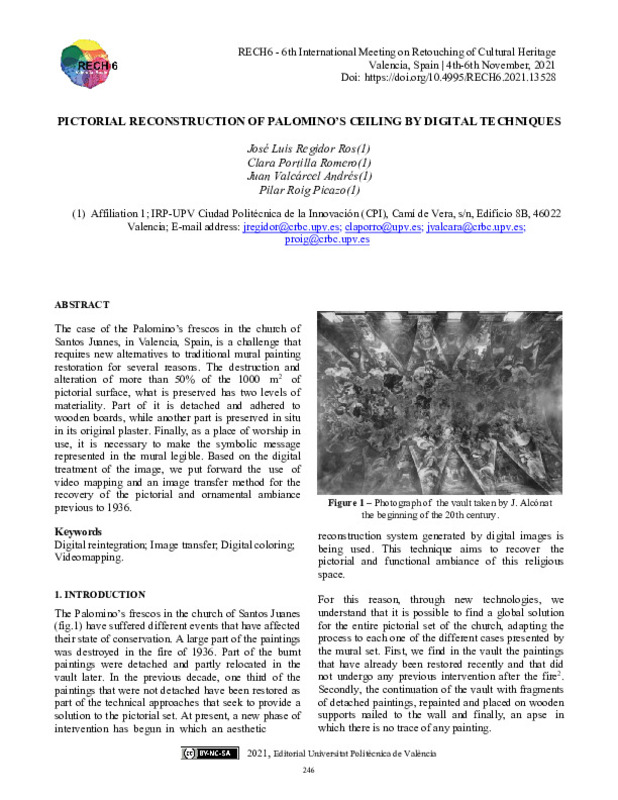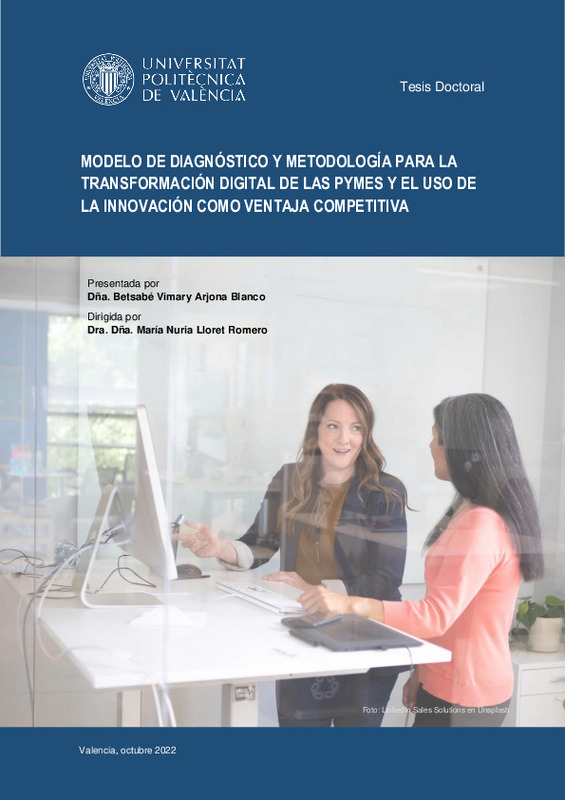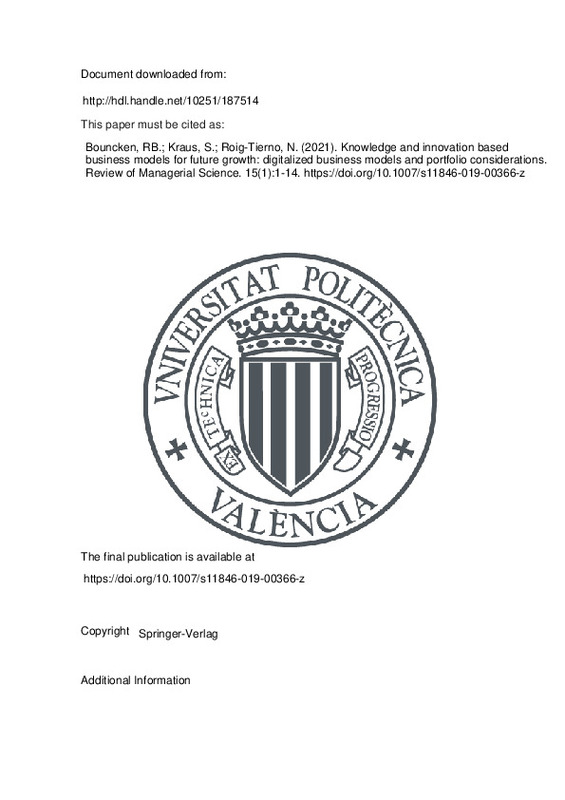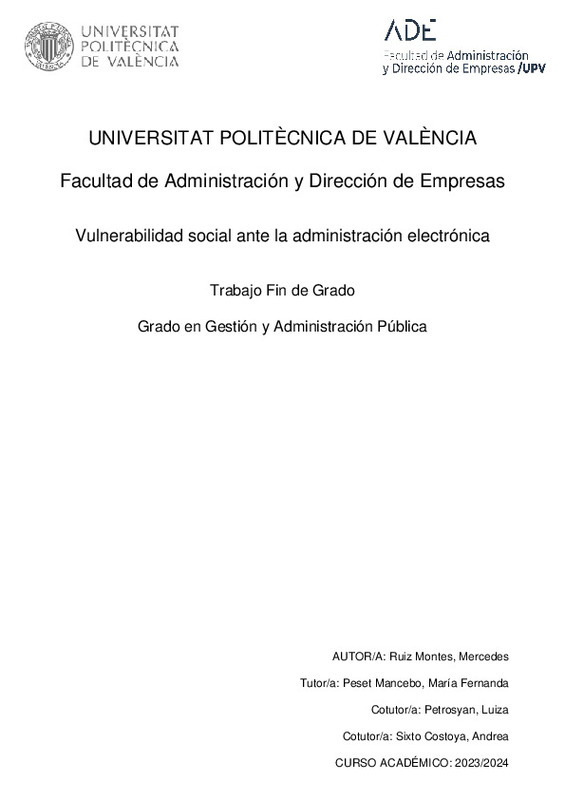|
Resumen:
|
[EN] The case of the frescos by Palomino in the church of Santos Juanes in Valencia is a challenge that requires new alternatives to traditional mural restoration. Part of the paintings burnt in 1936 were detached and ...[+]
[EN] The case of the frescos by Palomino in the church of Santos Juanes in Valencia is a challenge that requires new alternatives to traditional mural restoration. Part of the paintings burnt in 1936 were detached and partly relocated in the vault afterwards. One third of the paintings, which were not detached, have been restored. A new phase of intervention has now begun, using a system of aesthetic reconstruction generated by digital images. This technique, already used successfully in a previous intervention, aims to recover the pictorial and functional atmosphere of this religious space.In order to fulfil the goal of trying to give a global solution to Palomino's work, it is necessary to find a chromatic solution to the apse of the church due to the absence of its original frescos. We propose the use of video mapping based on a historical black and white photograph taken by J. Alcon before the fire. Taking chromatic and iconographic references from other pictorial works that are in the same space-time context as the original painting and were executed by the same author, an aesthetic approach to the work would be made through the technique of video mapping. Mapping allows the viewer to see the pictorial and functional values of the artwork, without using an invasive form, and favours a vision of its historical-artistic context. Without physically altering the heritage, the final audiovisual presentation can reach multiple levels of information, helping the observer to understand, for example, the technique and pictorial materiality of the frescos and, at the same time, to discover the different iconographic representations.On the other hand, the successful system realised in the first phase was based on digital treatment of another historical photograph in black and white. This procedure was carried out in several ways such as straightening, rectifying and scaling of historical photograph. After the previous process, the following step was a digital colouring based on the superposition of the captures of the existing fragments to the picture taken by J. Alcon, always taking the colours of the original painting as a reference. The creation of the virtual final image also requires colour management calculations to be transformed into a printed or projected reality. The last step is to print and transfer the image to the wall. This was done with Papelgel®, a temporary support for the transfer of inkjet and pigmented printing inks. In this case the main novelty is the use of an adhesive pattern which improves the transfer of digital print fidelity and maintains the breathability of the wall. In the current phase of intervention, this system is intended to be applied to the rest of the vault once the detached fragments have been relocated to their original position.This project is an important attempt in the search for perfect harmony between the different computing elements. Information technologies offer a new and wide range of possibilities to preserve cultural heritage and participate directly in the intervention processes required for their conservation and restoration.
[-]
|












